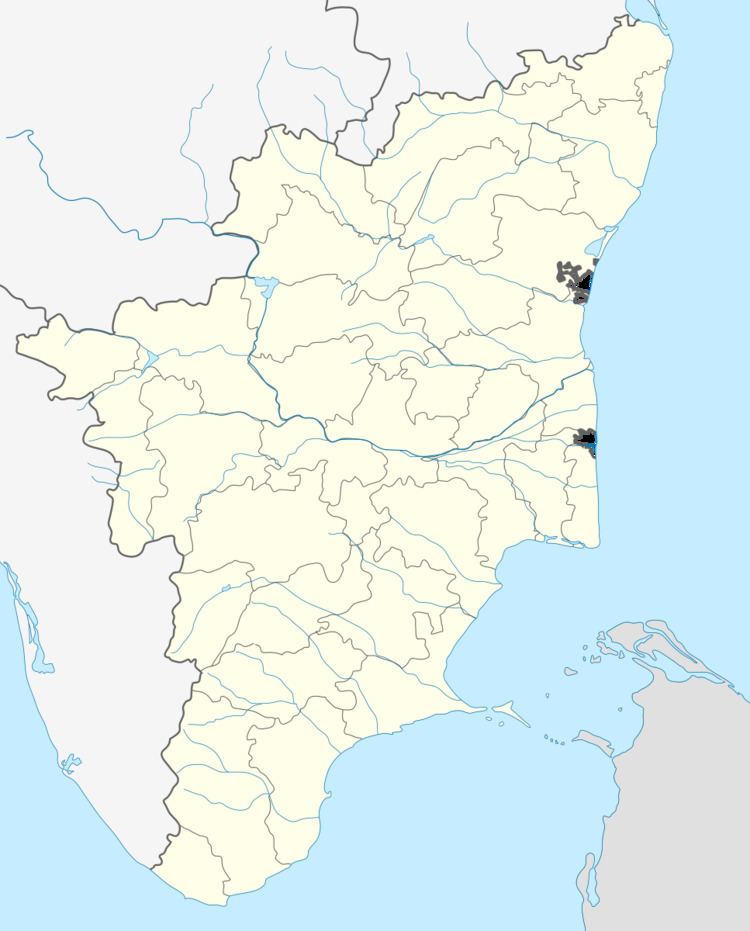 | ||
The Protected areas of Tamil Nadu State in South India cover an area of 3,305 km2 (1,276 sq mi), constituting 2.54% of the geographic area and 15% of the 22,643 km2 (8,743 sq mi) recorded forest area. It ranks 14th among all the States and Union Territories of India in terms of total protected area.
Contents
The major protected areas include 3 Biosphere reserves, 5 National parks, 8 Wildlife sanctuaries, 4 elephant reserves, 4 Tiger Reserves and 13 Bird sanctuaries. These protected areas of the state contain viable populations of threatened wildlife, keystone species and endemic species and cover significant eco-system types, habitats, landscapes and wildlife corridors. These protected areas of the state are mainly managed for conservation of biodiversity, education, recreation, and preservation of historic sites, unique landscapes and seascapes.
Creation and administration of Protected areas in South India originated with the Maharajas of the Southern Princely States' private hunting grounds. The Mudumalai National Park, established in 1940, was the first modern Wildlife Sanctuary in South India. Most protected areas throughout its 30 Districts are under the stewardship of the Ministry of Environment and Forests (India) and the Tamil Nadu Forest Department.
Biomes
The state includes a wide range of biomes, extending east from the South Western Ghats montane rain forests in the Western Ghats through the South Deccan Plateau dry deciduous forests and Deccan thorn scrub forests to tropical dry broadleaf forests and then to the beaches, estuaries, salt marshes, mangroves, and coral reefs of the Bay of Bengal.
Flora
The Angiosperm diversity of India includes 17,672 species. Tamil Nadu ranks 1st among all the States in the Country with 5640 species (32%). This includes 533 endemic species, 230 red-listed species, 1559 species of medicinal plants and 260 species of wild relatives of cultivated plant. The Gymnosperm diversity of the country is 64 species of which Tamil Nadu has 4 species (6%) of indigenous Gymnosperms and about 60 introduced species. The Pteridophytes diversity of India includes 1022 species of which Tamil Nadu has about 184 species (18%).
Fauna
The faunal diversity of Tamil Nadu includes 165 species of fresh water fish of which 126 (76%) are red listed, 76 species of Amphibians of which 56 (74%) are red listed, 177 species of Reptiles of which 77 (44%) are red listed, 454 species of Birds of which 32 are red listed and 187 species of Mammals of which 40 (21%) are red listed. The endemic fauna includes 36 species of Amphibians, 63 species of reptiles, 17 species of birds and 24 species of mammals.
Biosphere Reserves
Two of the three Biosphere Reserves in Tamil Nadu are among four in India and ninety five in Asia that are part of UNESCO's Programme on Man and the Biosphere (MAB).
The 3 Biosphere Reserves in Tamil Nadu listed by size are:
- The Gulf of Mannar Biosphere Reserve, is 10,500 km2 (4,100 sq mi). located in the Indian part of the Gulf of Mannar between the Tamil Nadu and Sri Lanka Coasts. Est. 1989.
- Nilgiri Biosphere Reserve is located in the Western Ghats and Nilgiri Hills. The reserve encompasses 5,520 km2 (2,130 sq mi). in the states of Tamil Nadu (2537.6 km²), Karnataka (1527.4 km²) and Kerala (1455.4 km²).
- Agasthyamalai Biosphere Reserve (ABR) was Established in 2001 and now includes 3,500.36 km2 (1,351.50 sq mi). ABR is awaiting approval as participant in the UNESCO-Man and the Biosphere (MAB) Programme.
